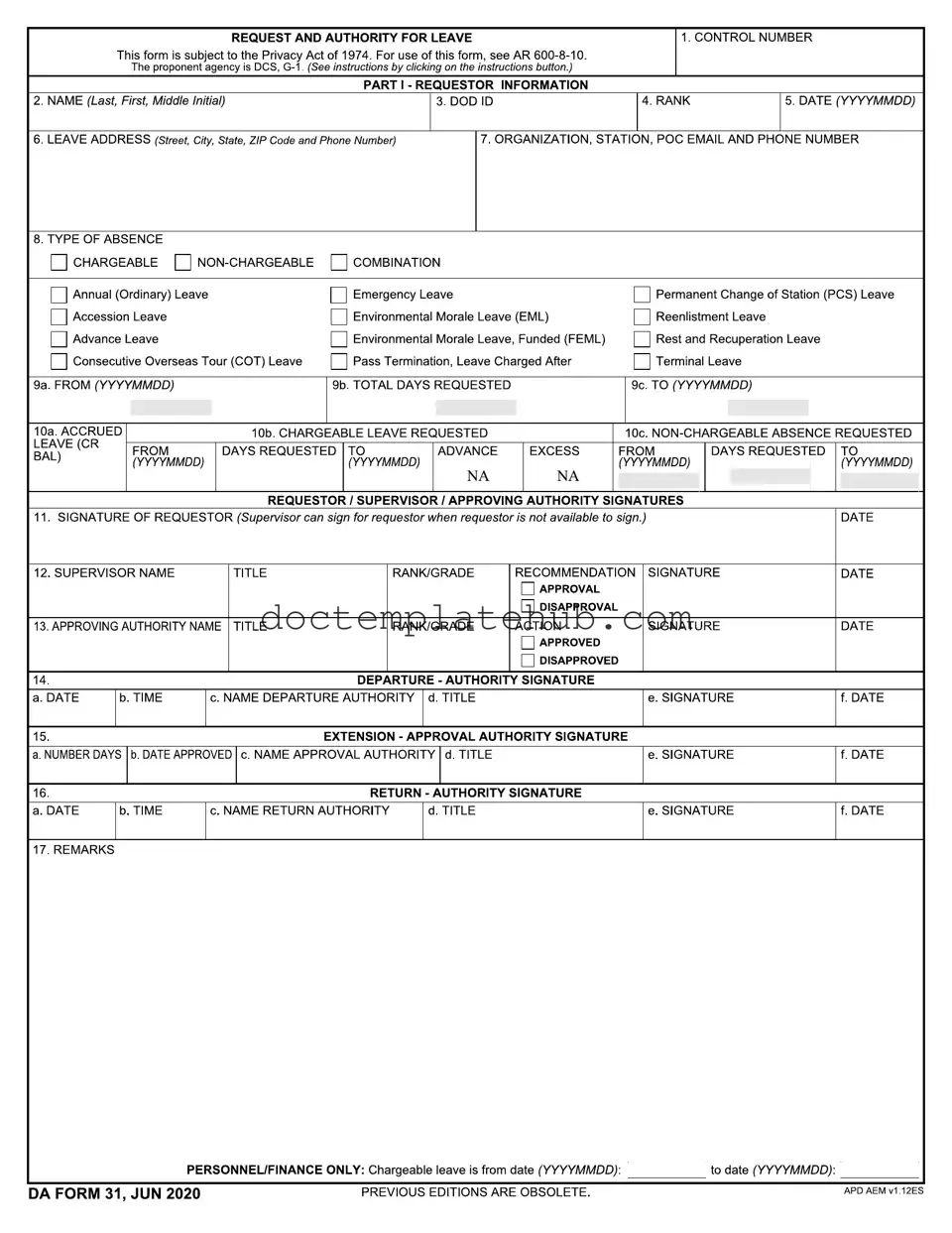The DA Form 2-1, or Personnel Qualification Record, serves a similar purpose to the DA 31 form by documenting the military service member's career history, qualifications, and assignments. While the DA 31 focuses on leave requests, the DA 2-1 provides a comprehensive overview of a soldier's military career, including their training, education, and duty assignments. Both forms are essential for maintaining accurate records within the military, ensuring that personnel management decisions are based on complete and up-to-date information.
The DA Form 4187, also known as the Personnel Action Form, is another document that shares similarities with the DA 31. It is used for various personnel actions, including requests for leave. While the DA 31 specifically addresses leave requests, the DA 4187 can be utilized for a broader range of personnel actions such as promotions, reassignments, and disciplinary actions. Both forms require signatures from supervisors and approving authorities, reinforcing the importance of oversight in personnel management.
The DA Form 5001, or Individual Medical Readiness Record, is related to the DA 31 in that it tracks an individual's medical readiness, which can impact their ability to take leave. This form ensures that service members are medically fit for duty, and it may be referenced when evaluating leave requests, especially for those seeking emergency or medical leave. Both documents aim to maintain the operational readiness of military personnel.
The DA Form 1059, or Academic Evaluation Report, also has a connection to the DA 31. It records a soldier's academic achievements and performance during military training courses. While the DA 31 is focused on leave requests, the DA 1059 plays a critical role in career progression. The outcomes of training and education can influence a soldier's eligibility for leave, particularly in cases where leave might affect their training schedules.
The DD Form 214, or Certificate of Release or Discharge from Active Duty, is crucial for service members transitioning out of the military. Similar to the DA 31, it involves documentation of military service but focuses on the completion of service rather than leave requests. The DD Form 214 provides a comprehensive record of a service member's time in the military, which can impact future employment and benefits, including the ability to take leave for veteran-related activities.
The SF 50, or Notification of Personnel Action, is a government form that documents various personnel actions, including changes in employment status. Like the DA 31, the SF 50 requires formal approval and is used to track changes that may affect a service member’s leave eligibility. Both forms serve to maintain accurate records and ensure compliance with regulations governing personnel management.
The DA Form 31-1, or Request for Leave, is an older version of the DA 31 that served the same purpose of documenting leave requests. While the DA 31 has been updated to streamline the process and incorporate changes in military policy, both forms share the fundamental goal of managing leave effectively. The transition from DA Form 31-1 to DA 31 reflects ongoing efforts to improve administrative processes within the military.
The DA Form 160, or Request for Temporary Duty (TDY) Travel, is another form that intersects with the DA 31 in terms of managing personnel movements. While the DA 31 focuses on leave, the DA Form 160 is used to authorize travel for duty purposes. Both forms require detailed information about the service member's situation and are essential for effective personnel management, ensuring that soldiers are accounted for whether they are on leave or on official travel.
Lastly, the DA Form 4856, or Developmental Counseling Form, can also relate to the DA 31 in terms of documenting discussions about leave and absence. This form is used for counseling service members on various issues, including performance and conduct. If a soldier’s leave request is denied or questioned, the DA Form 4856 can be utilized to provide feedback and guidance, ensuring that personnel decisions are well-informed and documented.
